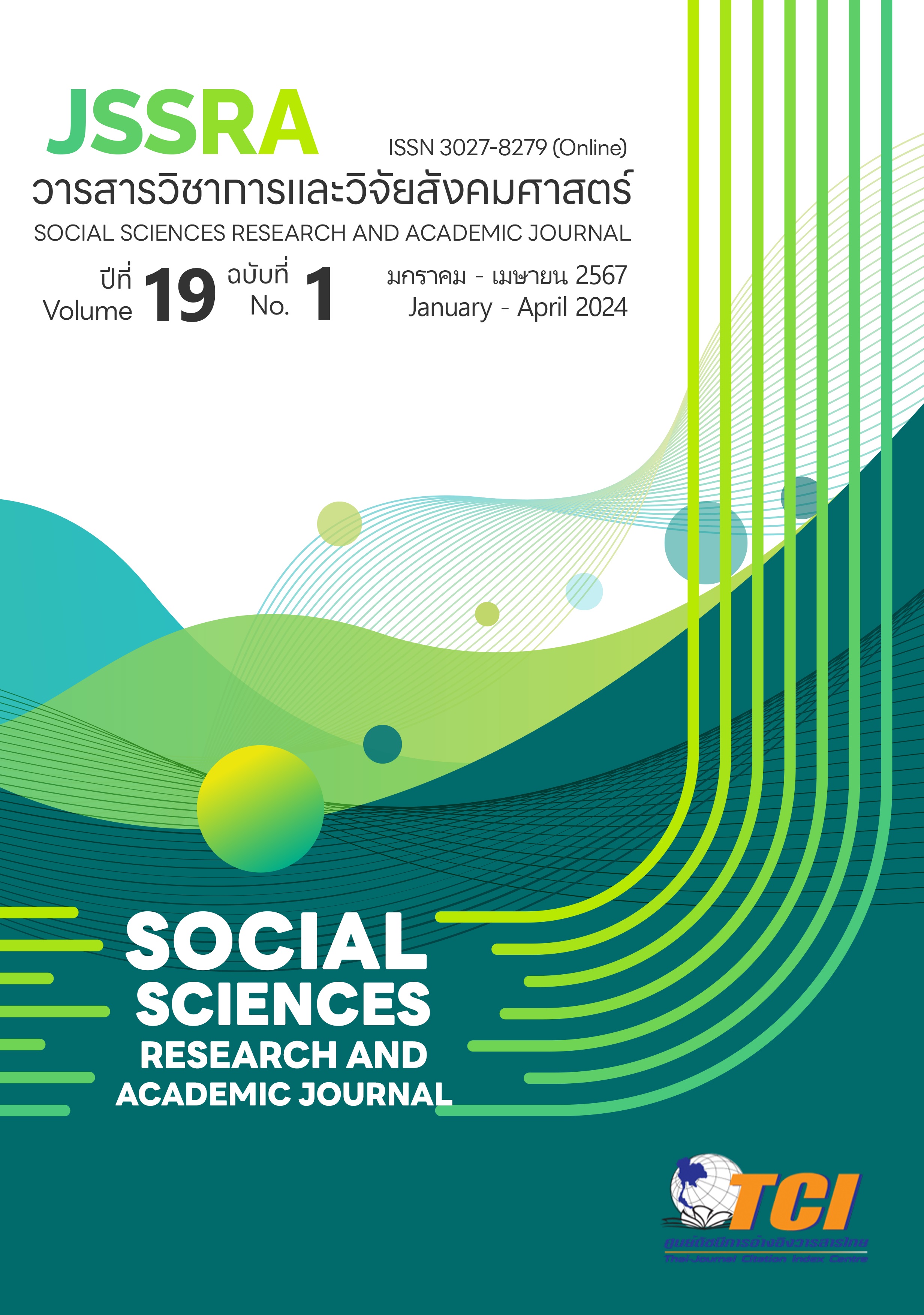The Development and Group Formation of Thai Herbal Farmers into the Industrial Sector in Accordance with Policies and Development Plans for the Herbal City in Phitsanulok Province: A Case Study of the Community Enterprise in Cultivating and Processing Medicinal Herbs, Thap Yai Chiang Subdistrict, Phrom Phiram District, with the Hmong Herbal Planting Group in Nakhon Thai District
Main Article Content
Abstract
The objective of this research were: 1) to study the development and group formation of Thai herbal farmers into the industrial sector under the policies and development plans of the Herbal City in Phitsanulok Province and 2) to explore the similarities and differences between successful and unsuccessful areas in developing herbal cultivation in Phitsanulok Province. The research utilized a qualitative research method, employing document analysis and in-depth interviews. The interviewees were divided into three groups: 1) The government officials
(6 persons), 2) The general public including farmers and local traditional doctors (5 persons), and 3) The business sector representatives including factory owners involved in herbal production and processing (3 persons). In total, 14 individuals provided information. The research tools included interview protocols and the data analysis method involved content analysis, cross-checking information and presenting data in a narrative form.
The findings of the study were as follows: 1) The missions and organizational driving forces of community enterprises and agricultural networks are modern and clearly defined, both within and outside Phitsanulok Province. The strength of the agricultural network plays a crucial role in driving the development of the herbal industry, especially in terms of on-site operations. 2) The similarities and differences between successful and unsuccessful areas in developing herbal cultivation in Phitsanulok Province are complex and depend on various factors such as different prices for various types of herbs, the readiness of each cultivation area, investment costs, agricultural technology and collaboration from external organizations. The strength and weakness of the agricultural network also play a significant role. The recommendations from this research include urging both government and private sector organizations related to policies and development plans for the Thai Medicinal Herbs City in Phitsanulok Province to develop and expand the groups and networks of herbal farmers in Phitsanulok Province to other areas. This is crucial due to the anticipated growth in the herbal market in the future.
Article Details
References
Bunprakarn, K., Deekhunthod, B., and Sangkhaphan, C. (2013). Flowers of the Dawn: Negotiating Space for Migrant Workers and Their Relationship with the Thai-Myanmar Border Economy. Bangkok: The Thailand Research Fund (TRF).
Chantawanich, S. (2009). Data Analysis in Qualitative Research. (9th ed.). Bangkok: Chulalongkorn University Press.
Kleepkaew, S. (2008). Communication Network of Organic Jasmine Rice Farmers, Organic Project Surin Province. Bangkok: Chulalongkorn University.
Mechanisms for Driving the National Master Plan for the Development of Thai Herbs 2017-2022 (Present). (2022). Retrieved September 4, 2022, from https://www.opsmoac.go.th/songkhla-dwl-files-441391791389
Ministry of Agriculture and Cooperatives. (2015). Agricultural Development Plan During the National Economic and Social Development Period No. 12. Retrieved January 17, 2022, from http://secretary.dld.go.th/
Ministry of Public Health. (2016). National Master Plan on Thai Herbal Development, 1st Edition, B.E. 2560-2564. Nonthaburi: TS Interprint.
Pounpunwong, W. (2023A). The Relocation of Thai Herbs from Backyard Gardens to the Industrial Sector: A Study of the Area in Phitsanulok Province. Bangkok: Thailand Science Research and Innovation (TSRI).
Pounpunwong, W. (2023B). Roles and Relationship of Dynamics among Stakeholders under State Alcohol Control Policies. Social Sciences Research and Academic Journal, 18(1), 121-136. Retrieved from https://so05.tci-thaijo.org/index.php/JSSRA/article/view/258078
Srisawichalamphan, T. (2015). Community Economic Development. Retrieved January 17, 2021, from http://fuangfah.econ.cmu.ac.th/ (in Thai)
Suksakul, S. (2010). Development of a Community Business Marketing Management Model for Self-Reliance According to the Sufficiency Economy Concept for Agricultural Business of Farmers Growing Sweet Tamarind for Trade, Phetchabun Province. Phetchabun: Phetchabun Rajabhat University.
Thawornrungkit, W. (2005). A Learning Network for Farmers to Pursue Additional Careers in Rural Communities. Chiang Mai: Chiang Mai University.
Thuansri, Y., Morathob, M., and Rodsin, S. (2016). Development of a Network of Organic Rice Farmers in Uttaradit Province A Case Study of Wang Kaphi Subdistrict, Mueang District, Uttaradit Province. Lampang Rajabhat University Journal, 5(2), 116–132. Retrieved from https://so04.tci-thaijo.org/index.php/JLPRU/article/view/72988
Yuprasert, B. (2016). Agricultural Extension Groups and Networks. Nonthaburi: Sukhothai Thammathirat Open University.


